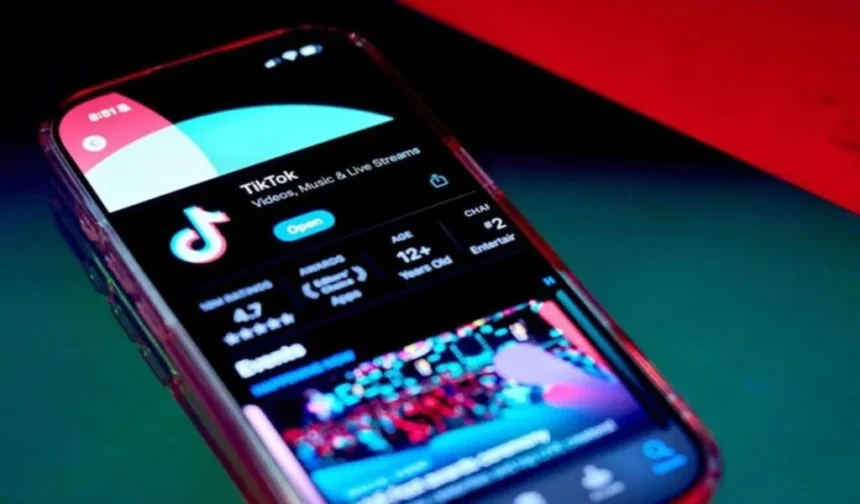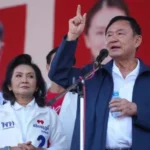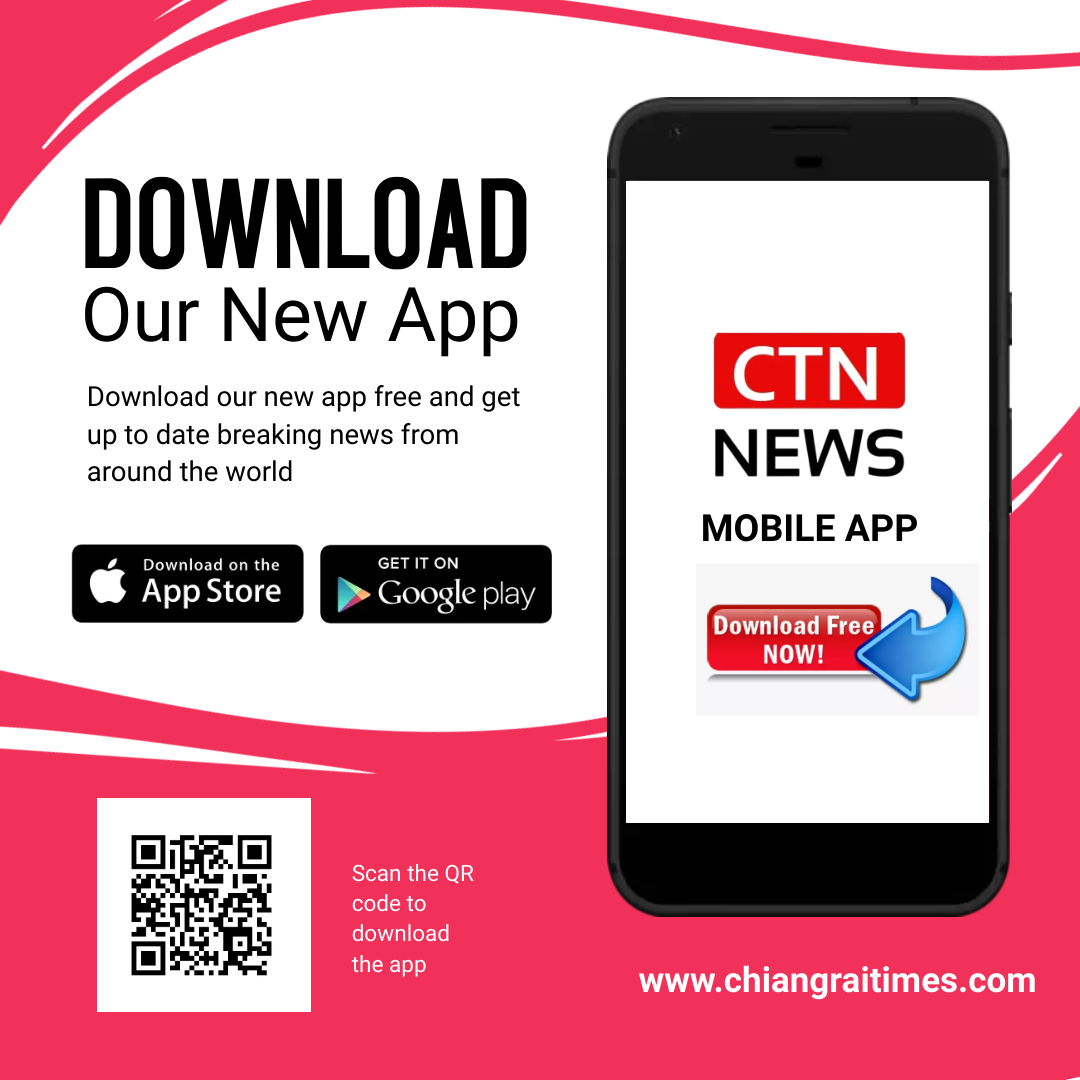Around 12 hours after closing in the United States, TikTok is back for many users, almost as if it never left, thanks to President-elect Donald Trump’s move to salvage the app.
TikTok greeted users with a notice that read, “Thanks for your patience and support. Thanks to President Trump’s efforts, TikTok has returned to the United States.
The abrupt move to relaunch the service comes after TikTok became useless for Americans late Saturday night. Attempting to open the app resulted in a notification indicating it was unavailable and requesting users to “stay tuned.”
TikTok Thanks Trump for Efforts in Saving the App
“A law outlawing TikTok has been passed in the United States. TikTok’s notice stated that users are currently unable to access the app. TikTok’s parent company, ByteDance, also owns Lemon8 and CapCut, and the app was not available on Apple or Google Play stores.
On Sunday morning, Trump declared that, following his inauguration on Monday, he would sign an executive order delaying the implementation of the divest-or-ban law. Within hours, US users regained access to TikTok’s app and website.
After weeks of uncertainty, TikTok’s 170 million American users, many of whom use the app for hours every day to find news, entertainment, and community and, in some cases, to make a living, will be relieved to hear that it has been restored.
It also said that Trump may achieve a big political victory by taking credit for reviving the popular program.TikTok said in a statement at noon Sunday that Trump’s commitment to safeguarding the app enabled it to restore access to US users even before his expected executive order was signed.
TikTok’s 170 Million U.S. Users Rejoice as App is Restored
“In accordance with our service providers, TikTok is in the process of restoring service. We applaud President Trump for giving the essential clarity and confidence to our service providers that they will face no penalties for bringing TikTok to over 170 million Americans and supporting over 7 million small businesses to thrive,” the company said in a statement. “We will work with President Trump on a long-term solution that keeps TikTok in the United States.”
Shou Chew, TikTok’s CEO, is scheduled to join Trump’s “Make America Great Again Victory Rally” in Washington, DC, on Sunday night before taking a prominent position at the next president’s inauguration on Monday.
While TikTok’s ban lasted only a few hours, ensuring the app’s long-term viability in the United States will likely be more difficult.
In a Truth Social post on Sunday, Trump announced that he intends to sign an executive order following his inauguration on Monday to “extend the period of time before the law’s prohibitions take effect so that we can make a deal to protect our national security.”
He urged TikTok’s partners to restore the app, stating that “the order will also confirm that there will be no liability for any company that helped keep TikTok from going dark before my order.”
“Americans deserve to see our exciting Inauguration on Monday, as well as other events and conversations,” Mr. Trump added.
Trump had stated that he was considering extending the ban for 90 days to allow him to negotiate a deal to sell the app to a non-Chinese owner. In his article, Trump stated that he would seek a 50-50 joint venture between TikTok’s current parent business, China-based ByteDance, and a new American owner.
Such an announcement may represent an immediate political success for Trump among America’s youth. Although Trump backed a TikTok ban in his first term, he has recently declared he wants to keep the app alive.
On Sunday morning, he posted on Truth Social, “SAVE TIKTOK!” Last month, he requested the Supreme Court postpone the rule until his incoming administration agreed to keep TikTok available to Americans. The Supreme Court upheld the law on Friday.
Late Saturday night, TikTok sent a pop-up message to Trump, notifying users that the app was inaccessible in the US.
“We are fortunate that President Trump has indicated that he will work with us on a solution to reinstate TikTok once he takes office,” the business wrote in a pop-up message. “Please stay tuned!”
Chew also praised Trump in a video response to the company’s Supreme Court loss on Friday, saying, “We are grateful and pleased to have the support of a president who truly understands our platform, one who has used TikTok to express his own thoughts and perspectives, connecting with the world and generating more than 60 billion views of his content in the process.”
At a press conference at Mar-a-Lago in December, Trump credited TikTok with helping him win the election.
“I have a warm spot in my heart for TikTok,” Trump remarked before claiming to have won the youth vote by a large majority. “And there are those that say that TikTok had something to do with it.”
The TikTok ban passed with broad bipartisan backing in Congress, citing national security concerns. In 2023, a Pew Research Center survey revealed that roughly half of Americans supported the prohibition. However, it remains controversial among younger people.
Trump’s executive order is expected to delay the ban’s implementation so that TikTok’s parent company, ByteDance, has more time to find an American owner.
Trump’s Sunday message may have been enough to persuade TikTok’s technological partners, such as Oracle, which hosts TikTok’s content in the United States, and Apple and Google, which host the app on their respective app stores, that the platform will continue to be supported.
If the rule is enforced, such firms might face fines of up to $5,000 for each individual who uses TikTok.
However, the executive order may face legal challenges, particularly from members of Trump’s party, who oppose extending the ban.
“We commend Amazon, Apple, Google, and Microsoft for following the law and halting operations with ByteDance and TikTok, and we encourage other companies to do the same,” Republican Senators Tom Cotton of Arkansas and Pete Ricketts of Nebraska stated in a joint statement Sunday.
“Any corporation that violates the legislation faces devastating insolvency. Now that the law is in effect, there is no legal basis for a ‘extension’ of its effective date.”
Cotton and Ricketts stated that TikTok should only return online after “severing all ties between TikTok and Communist China.” Only then would Americans be safeguarded from a communist-controlled TikTok, which poses a serious threat to their privacy and security.”
The app’s short disruption marked the peak of a prolonged initiative that restricted US access to TikTok because of national security worries regarding its owner, ByteDance, based in China.
Last April, former President Joe Biden enacted a law allowing ByteDance 270 days to divest TikTok to a US or allied buyer or face a potential ban.
So, even if Trump promises to rescind the ban, he cannot simply overturn a law approved by Congress and signed by the president through an executive order.
This is the reason TikTok initially ceased operations. A source from TikTok stated that, despite the Biden administration’s promises to postpone enforcement until the Trump administration took over, “several key service providers” are concerned that the ban will start being enforced on Sunday.
Apple removed TikTok from its app store due to a ban, according to a statement made on Sunday. It stated that the app would remain available to consumers who have already downloaded it, but it would not be able to be re-downloaded once uninstalled.
“Apple is obligated to follow the laws in the jurisdictions where it operates,” the company stated. “Under the Protecting Americans from Foreign Adversary Controlled Applications Act, apps developed by ByteDance Ltd. and its subsidiaries — including TikTok, CapCut, Lemon8, and others — will no longer be available for download or updates on the App Store for users in the United States starting January 19, 2025.”
The only genuinely permanent answers to keeping TikTok online appear to be: 1) passing new legislation reversing the old one — a difficult feat given the existing bill’s broad bipartisan support in Congress — or 2) forcing a sale to an approved buyer.
TikTok has attracted formal offers from two interested buyers: one led by billionaire Frank McCourt and “Shark Tank’s” Kevin O’Leary and the AI search engine PerplexityAI. Additionally, other parties have shown interest in acquiring the app.
However, ByteDance has long maintained that it has no intention of selling. TikTok’s near-magical algorithm, which keeps users hooked on the app, is its secret weapon, and pricing such a desirable commodity, envied by every other social media app, is tricky.
McCourt’s buying group has stated that it will buy TikTok’s US assets without the algorithm and rebuild the app, although internet behemoths such as Meta and YouTube have spent years attempting to mimic TikTok’s successful algorithm without success.
O’Leary told CNN he met with Trump at Mar-a-Lago earlier this month to discuss the app’s plans.
Spinning off an American-only version of TikTok may also require the rest of the globe to download a separate app to view US users’ content. Bloomberg and the Wall Street Journal reported last week that China is considering a sale to Elon Musk.
Musk has the financial means to buy the app, and as a staunch Trump supporter, he could assume a quasi-official position in the administration. However, it remains uncertain if he is interested, and he hasn’t commented on the reports about the acquisition.
Musk opposed the TikTok ban on X on Sunday, citing its violation of free expression.
“That being said, the current situation in which TikTok is permitted to operate in America but X is not permitted to function in China is unfair. “Something needs to change,” Musk stated.
If ByteDance chooses to participate, Trump may say that sufficient progress has been made on a transaction, legally allowing Trump to reverse the ban and begin the selling process.
On Sunday, Trump posted on Truth Social that the United States should hold a “50% ownership position in a joint venture.”
“By doing this, we save TikTok, keep it in good hands and allow it to say (sic) up,” he told me. “Therefore, my initial thought is a joint venture between the current owners and/or new owners whereby the U.S. gets a 50% ownership in a joint venture set up between the U.S. and whichever purchase we so choose.”
However, this is temporary. The deal must eventually go through, and TikTok’s future remains uncertain until then.
Many TikTok users had hoped that the closure would be temporary.
The Saturday night shutdown was a devastating loss for several users, highlighting the app’s cultural importance. Many users joined the app in early 2020 when the Covid-19 pandemic had previously isolated them from the community and other creative avenues.
“I’m very sad for so many individuals. I was shocked. I believe I was in denial that it would simply go dark,” influencer Shannon Lange told CNN early Sunday before access to the app was restored.
Alix Earle, an influencer with roughly 8 million TikTok followers, shared a sorrowful video on the app before the closure, stating, “I feel like I’m going through heartbreak. This platform is more than just an app or a job for me. I have so many memories stored here. I’ve been posting every day for the past six years.
Julie Turkel, a TikTok creator who said she was scrolling the app when it stopped working Saturday night, described the shutdown as “surreal.”
“It was just surreal, it did have a very eerie feeling,” Turkel told CNN. She added that, while she expected the shutdown following TikTok’s warnings last week, “seeing it actually go down is different.”
Turkel told CNN early Sunday that she was going on a digital “detox,” which included not using Instagram or other short-form video platforms while TikTok was down. The break did not last long.
When the app returned on Sunday, Lange shared a video of herself smiling and dancing, captioning it: ” The longest 13 hours of my life, and I was sleeping for 9 of them.”

Salman Ahmad is known for his significant contributions to esteemed publications like the Times of India and the Express Tribune. Salman has carved a niche as a freelance journalist, combining thorough research with engaging reporting.














